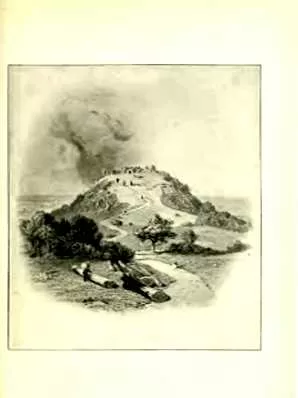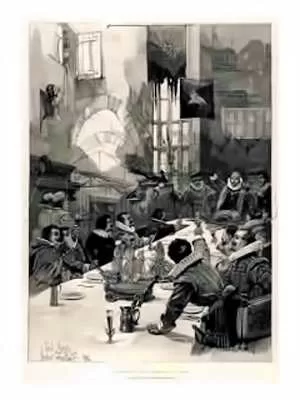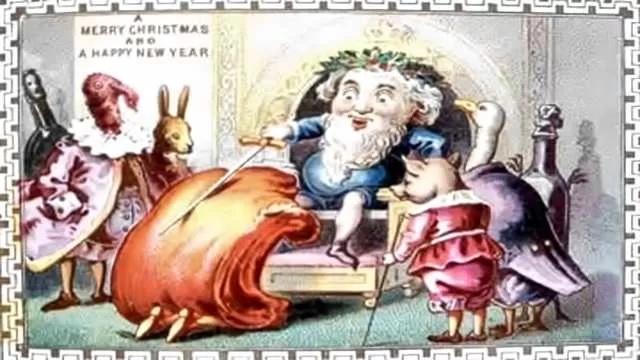The Fascinating History of Hoghton Tower: A Royal Connection
When William I, also known as William the Conqueror, claimed England in 1066, he brought with him a cadre of noblemen from France, one of whom was Herverus. This nobleman was granted extensive lands across Norfolk, Suffolk, and Lancashire, laying the foundation for a family legacy that would intertwine with English history.
Among Herverus’s descendants was his grandson, Hamo, who married Maud Bussel, the daughter of the second Baron of Penwortham. This union brought the manor of Hocton into the family, marking the beginning of a lineage that would evolve the family name from Hocton to Hoghton and eventually de Hoghton.
Rise of Hoghton Tower
The family seat, Hoghton Tower, underwent significant renovations during the Tudor period, culminating in its completion in 1565. However, Thomas Hoghton, a devout Catholic, spent only four years in the newly finished residence before seeking exile in France due to the political climate of the time. His nephew, Richard Hoghton, inherited the estate and proved to be a shrewd political player, gaining favor with King James I, who elevated him to the status of baronet.

In 1617, King James I made a notable visit to Hoghton Tower, marking a significant event in the estate’s history. Arriving on August 15th and departing on the 18th, the King was treated to a lavish display of hospitality that included a half-mile-long red carpet laid out by Richard Hoghton in a bid to impress the monarch. This extravagant gesture nearly bankrupted the estate but ultimately succeeded in captivating the King.
Royal Feast to Remember
The visit was marked by a grand feast, the details of which have been meticulously recorded in the Journal of Nicholas Assheton, a guest at the event. The King indulged in a sumptuous array of dishes, including boiled capon, roast venison, and even a roast swan. The menu for the Sunday dinner on August 17th, 1617, was nothing short of opulent:
First Course:
- Pullets
- Boiled capon
- Roast shoulder of mutton
- Roast haunch of venison
- Hot pasty of venison
- Roast turkey
- Cold tongue pie
- Custards
- Roast pigs
Second Course:
- Hot pheasant
- Quails
- Partridge
- Artichoke pie
- Buttered peas
- Red deer pie
- Pear tart
The sheer volume and variety of food served during this royal visit highlight the wealth and status of the Hoghton family. It is said that during this feast, King James proclaimed the loin of Lancashire beef to be the finest he had ever tasted. In a moment of jest, he knighted the beef, dubbing it “Sir Loin,” a playful pun on the French term “sur longe,” meaning “over loin.” This whimsical anecdote has become a part of culinary lore, with variations attributed to other monarchs like Henry VIII and Charles II.
Legacy of Change
The festivities did not end with the feast. On August 17th, King James also addressed a petition from the people of Lancashire, who were frustrated by restrictions on outdoor games and sports imposed by the Queen’s Commission of 1579. The King’s sympathetic response led to the publication of “The Book of Sports” in 1618, which permitted various forms of recreation on Sundays. This decision was met with mixed reactions, particularly from Puritan leaders, and is believed to have contributed to the tensions leading to the English Civil War.

During the Civil War, the Hoghton family remained loyal to the crown. Richard’s son, Gilbert, fought valiantly against the Parliamentarians but narrowly escaped death during the Battle of Preston in February 1643. Tragically, Hoghton Tower was captured, and a devastating explosion in the gunpowder magazine resulted in the loss of 200 lives, including that of Nicholas Starkie, a figure linked to the infamous Cleworth possession case.
Restoration of Hoghton Tower
Following the tumultuous events of the Civil War, Hoghton Tower fell into disrepair. It wasn’t until the 1870s that restoration efforts began, spurred by the visit of notable figures like Charles Dickens, who lamented the state of the historic site in his short story “George Silverman’s Explanation.” Today, Hoghton Tower stands fully restored, welcoming visitors to explore its rich history.
The estate now hosts a variety of events, including summer concerts and open-air theatrical performances, making it a vibrant part of the local community. Visitors can enjoy the stunning architecture, picturesque grounds, and the stories that echo through its walls.
Conclusion
Hoghton Tower is more than just a historical landmark; it is a testament to the intertwining of royal history, culinary tradition, and the resilience of a family that has weathered the storms of time. From the lavish feasts that once entertained kings to its current role as a cultural hub, Hoghton Tower continues to captivate the imagination of all who visit. Whether you’re a history buff, a foodie, or simply looking for a unique day out, Hoghton Tower offers a glimpse into a fascinating past that is well worth exploring.

